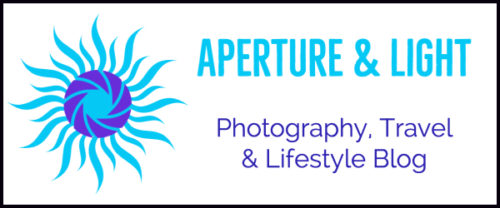Lens filters simply rock! Fact – if you leave them behind, it never fails, you’ll need them for your shoot. Lens filters extend your shooting day, create artistry and add that little something extra.
They’re in the Bag, Ready to Roll
While there are multiple filter types to choose from, the three filter types that live in my camera bag include:
- Circular polarizing filters – Referred to as sunglasses for your lenses, these filters perform like your polarized sunglasses.
- Color vibrancy and saturation increases.
- Clarity and details are sharper.
- Glare from harsh rays is reduced.
- To adjust saturation and color intensity, rotate the filter.
- Neutral density filters – Whereas a polarizer serves as sunglasses for your lenses, neutral density filters serve as a sunblock for your sensor. Made of gray glass, these filters reduce the amount of light that passes through to your sensor. Shutter speed slows. This slowing effect creates dreamy waterfalls and silky motion. Neutral densities range in strength from 1/3 stop up to ten stops.
- Graduated neutral density – Made of neutral density and clear glass, these filters balance light in high contrast scenes. Gray glass fades from clear to shades of gray. Available as soft grad (gentle fading), medium grad (greater fading) and hard grad (very defined between clear and dark gray glass). Before the sun dips below the horizon or after cresting the surface at sunrise, these little filters help reduce contrast and reduce blown out highlights.
Specialty Lens Filters
There are also speciality filters for lenses that add effects to your images. Examples are star filters (provide star points when shooting lights, street lamps) and soft focus filters. Warming and cooling filters alter the overall tint of your images.
If you’re wanting starburst effects, read how to create them in camera: Fast Tips: Creating Stars and Starbursts in Camera

Camera Lens Filters – Brands, Where to Buy
When buying filters, you’ll want to check the filter size of your lenses as they screw on to the front of your lens. For example, my 24-70mm uses 82mm and my 70-200mm uses 77mm. If you’re starting to buy filters, starting with your most used outdoor lens and the filter type you need most is suggested. They’re expensive and even though they’re small, they still take up room in your camera bag.
I started with circular polarizers then added neutral density filters. The graduated filter was added shortly after.
Both Amazon and B&H Photo carry a variety of sizes and brands. Your local camera shop, may also be another source too. The brands in my bag today include B+W by Schneider Optics and LEE Filters. In addition to the traditional screw on filters, they also make the filters needed for super-wide lenses (ex. Nikon 14-24mm).
Other brands include but are not limited to Hoya, Tiffen, Cokin, Formatt Hitech, Heliopan.
Prices and quality vary across brands. LEE’s reputation for quality glass ranks high across photographers. They’re also at a higher price point. B+ W filters are solid quality and price performers.
We invest in our cameras and lenses. Filters and their accessories need to add to your imagery and image quality. Take the time to research what works for your goals and budget.
Circular polarizers, neutral density filters and graduated filters make it from the camera bag to my lenses almost on a daily basis.
I’ve never regretted buying these filters or having them with me at all times. What I do regret? The few times that I’ve changed out my camera bags and didn’t pack them.

